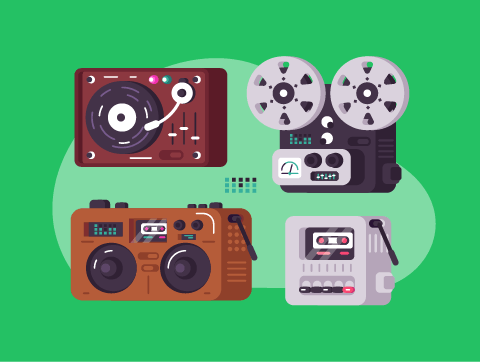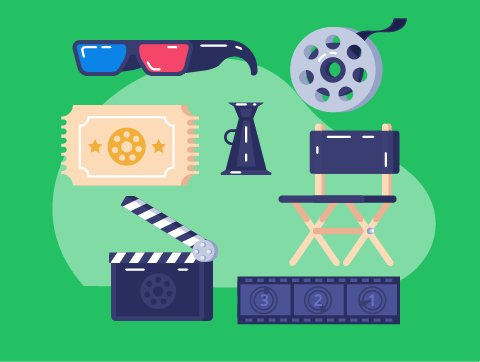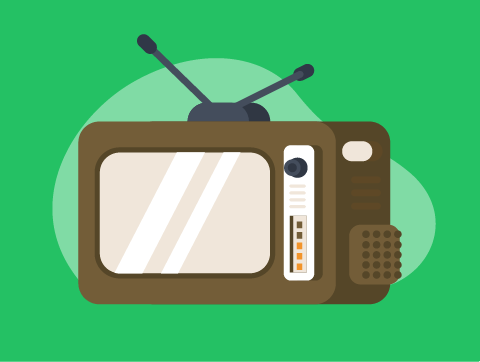Introduction
When we talk about the “media industry,” we’re referring to the organisations that create and distribute content.
This can include everything from news organisations & movie studios to social media platforms & video game developers.
Within the media industry, there is a subset of businesses known as “traditional media”.
In this lesson, we will learn about:
- What traditional media is
- The different types of traditional media & how they’re evolving
What Traditional Media Is
Traditional media is any type of content that is distributed through established channels.
These channels have been around for many years and are typically well-known and trusted by consumers.
Some examples of traditional media channels include:
- Film
- Television
- Radio
- Print publishing.

What Traditional Media Is
One key thing to understand about traditional media is that it generally requires more financial resources to produce than other types of content.
For example, making a movie or TV show can be very expensive due to the cost of sets, props, costumes, equipment, and location fees.
Similarly, printing a newspaper or magazine requires purchasing paper & ink, renting space in a printing press facility, and paying for distribution.
These higher costs often mean that traditional media companies are large corporations with significant financial resources.

The Types of Traditional Media
Every sector of the media industry produces a particular kind of media.
For example, the publishing industry produces media such as books, newspapers, magazines, and comic books.
Traditional media has been very profitable for many businesses because it is a tried & trustworthy method of communication.
However, some aspects of traditional media are becoming outdated & unpopular due to the recent growth in the popularity of digital media.
Let’s look at the four types of traditional media and how they’re evolving to keep up with the modern age.

Film
Movies are perhaps the most well-known type of traditional media.
Films are shot on location or in studios using actors, actresses, and crew members. Once filming is complete, the movie undergoes editing before being released.
The first film available for public viewing was released in 1895.
These early movies were in black and white with no recorded audio (though live music would often be played with the movie).
This, of course, changed massively over time with the introduction of colour video in 1908 and recorded audio in 1927.

Film
There have been many additional advancements with the growth of technology.
Examples of this include the introduction of computer-generated animation (CGI), 3D technology, and ultra-HD filming equipment.
Also, while traditionally films could only be viewed in a movie theatre for a short amount of time, we’ve also seen this change a lot, with new ways of viewing film media arriving, from VHS tapes & DVDs to modern streaming services.
Streaming services have had a particularly large impact in recent years, with many people working in film production feeling it is harming the cinema experience.

Television
Like movies, TV shows are also filmed on location or in studios using actors/actresses and crew members.
However, TV shows are generally shorter in length than movies (30 minutes vs 2 hours) and are released on a regular schedule (weekly for most shows).
The television industry has historically provided broadcast media.
Broadcast media means television programmes that are broadcast live from a satellite at the company’s broadcasting base.
Even replays of shows are broadcast live on the company channel.
Television has maintained a high level of popularity for a long time.

Television
The first broadcast was in 1928, but it became a common feature in homes during the 1950s with black and white shows before colour tv arrived in the late 1960s.
Then more modern advances like satellite and digital tv brought a wide range of content and high-definition quality from the 1990s onwards.
In recent years the popularity of broadcast television has been declining due to streaming platforms such as Netflix.
Much like in the film industry, the on-demand nature of the service has proven popular amongst viewers.
The broadcast television industry is trying to adapt to this by also providing its own on-demand streaming services.

Radio
Radio stations broadcast audio programming to listeners through the airwaves.
This can include music, talk shows, weather updates, traffic reports, sports games, etc.
Radio technology has been around as early as the 1890s.
However, radio stations for public listening began in the 1920s when the first-ever public broadcast was issued to inform the public of the US presidential election race.
Much like with television, radio is traditionally a form of broadcast media, where the radio show is broadcasted live from the radio station to your radio receiver.
Another similarity with television is how it has evolved its technology with digital broadcasts (rather than analogue ones) that provide higher-quality audio.

Radio
Radio stations are still a popular form of media. For example, BBC Radio 1 currently has over 8 million regular listeners.
However, they have had to adapt to new trends and evolve to remain relevant in the digital age. Most notably due to the threat of streaming services like Spotify.
In order to tackle these issues, most radio stations have become multi-platform businesses.
They produce video content, such as live/recorded streams of their radio shows. They also provide recordings of their shows as podcasts so that they can be listened to on demand.

Print Publishing
Print publishing refers to all forms of printed material such as books, newspapers, magazines, etc.
This type of content is usually produced by writers/editors who work for publishing companies or individual authors who self-publish their work.
Print publishing is the oldest form of media available.
The earliest known printed book was in the year 868, though modern printing was invented in 1450 with Johannes Gutenberg’s printing press.
Obviously, printing has evolved massively, with most of us having a printer in our own home and huge-scale, high-definition colour printing being used to publish print media like magazines.

Print Publishing
Print publishing has been a reliable source of media for a very long time, especially newspaper publishing.
Newspapers provided the best way to access news media before television was accessible to the public. However, it has faced major challenges in recent times and has had to evolve.
With modern technology, some print publishers now also create digital media.
Many popular newspaper and magazine companies have a website where all their articles are posted and viewed by paying for a monthly subscription.
As well as this, e-books are becoming very popular, which provides a new way for print publishing to sell its media.

Lesson Summary
Media is a method we use to communicate.
Traditional media is any type of content that is distributed through established channels.
Film has evolved from the early days of black and white with no speaking, to modern cinema and online streaming services.
Television was founded in broadcast media and watched on a fixed schedule but has adapted to modern on-demand streaming services.
Radio stations broadcast all around the world but have had to recently adapt to include online streaming, podcasts and even video.
Print publishing includes newspapers, magazines and books which have had to evolve to include news websites and e-books

